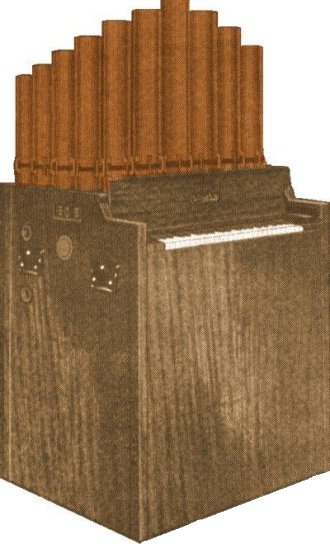Keyboard Calliope
Pictured is a portable keyboard calliope, or calliaphone, not unlike the type found in entertainment venues where Calliope Rag composer James Scott would have performed. One difference - inside this unit is an electric air compresser, which sends air instead of steam through the pipes, and a roll reader for automated playback, accessible from the rear. This was an average-sized instrument, but there were some that were much bigger, either because of increased pipe size or large boiler capacity if they used steam. Many calliopes were installed permanently in an area of a river showboat, or within a circus wagon designed to house the instrument and allow the pipes maximum sound exposure. Since some steam calliopes can be heard for up to five miles off, performers usually need to wear some sort of ear protection while playing. On older models, the keys were connected directly to the steam valves for each pipe, requiring a half-pound of pressure to play, as opposed to an average of two to three ounces for a piano. Modern calliopes have electric valves operated by sensors on the keyboard. Pipe materials varied, with some using wood or copper, but brass was also common. Pipe metals had to be specially treated in order to avoid excessive expansion when the hot steam was applied, potentially putting the instrument out of tune. Even air powered calliopes have intonation problems because the pipes heat up from the pressure.
Performer: Bill Edwards

